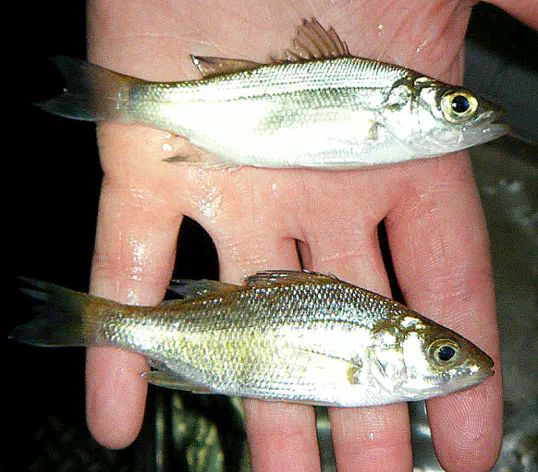Food web ecology

Food web linkages determine the flow of energy through ecosystems. Competition for resources can determine whether species coexist, or the magnitude of new species invasions. There are myriad ways to quantify food webs and trophic linkages. Holistically considering the information each provides, while bringing in new techniques from community ecology, can expand our understanding of trophic interactions and food web structure in aquatic ecosystems.
Stable isotopes, diet content analysis, fatty acid analysis, and other tools have all been used to quantify trophic interactions among species and infer food web structure. We’ve used all of these approaches in studies designed to understand the competitive and predatory interactions of invaders, from white perch in southeastern reservoirs to round goby in the Great Lakes, and found that often diet overlaps can vary considerably with space, time, and ontogeny. Bringing in tools from community ecology to understand diet diversity in these species, we’ve also shown that individual-level variability can comprise a considerable amount of overall niche space for some species, and that the interpretation of some food web markers can be strongly influenced by species identity. We continue to use these tools to understand food web ecology, including in new projects aimed at understanding match-mismatch dynamics in an increasingly unpredictable climate.
Photo: A white bass (top) and white perch (bottom) from a North Carolina reservoir. Credit: Zach Feiner.
Relevant publications
Evans, T.M., Z.S. Feiner, L.G. Rudstam, D. Mason, J. Watkins, E.D. Reavie, A.E. Scofield, L.E. Burlakova, A.Y. Karatayev, and W.G. Sprules. 2021. Size spectra analysis of a decade of Laurentian Great Lakes data. Canadian Journal of Fisheries and Aquatic Sciences 79: 183-194.
Leonhardt, B.S., A. Happel, H. Bootsma, C. Bronte, S. Czesny, Z.S. Feiner, M. Kornis, J. Rinchard, B. Turschak, and T.O. Höök. 2020. Diet complexity of Lake Michigan salmonines: 2015 – 2016. Journal of Great Lakes Research 46: 1044-1057.
Feiner, Z.S., C.J. Foley, R.K. Swihart, H. Bootsma, S. Czesny, J. Janssen, J. Rinchard, and T.O. Höök. 2019. Individual and spatial variation are as important as species-level variation to the trophic complexity of a lentic food web. Ecology of Freshwater Fish 28: 516-532.
Feiner, Z. S., Foley, C. J., Bootsma, H. A., Czesny, S. J., Janssen, J., Rinchard, J., & Höök, T. O. (2018). Species identity matters when interpreting trophic markers in aquatic food webs. Plos one, 13(10), e0204767.
Feiner, Z.S., M.K. Brey, and C. Burgett. 2018. Consistently high trophic overlap between invasive white perch and native black crappie in southeastern reservoirs. North American Journal of Fisheries Management 39: 135-149.
Feiner, Z.S., J.A. Rice, A.J. Bunch, and D.D. Aday. 2013. Trophic niche and diet overlap between invasive white perch and resident white bass in a southeastern reservoir. Transactions of the American Fisheries Society 142: 912-919.
Feiner, Z.S., J.A. Rice, and D.D. Aday. 2013. Trophic niche of invasive white perch and potential interactions with representative reservoir species. Transactions of the American Fisheries Society 142: 628-641.